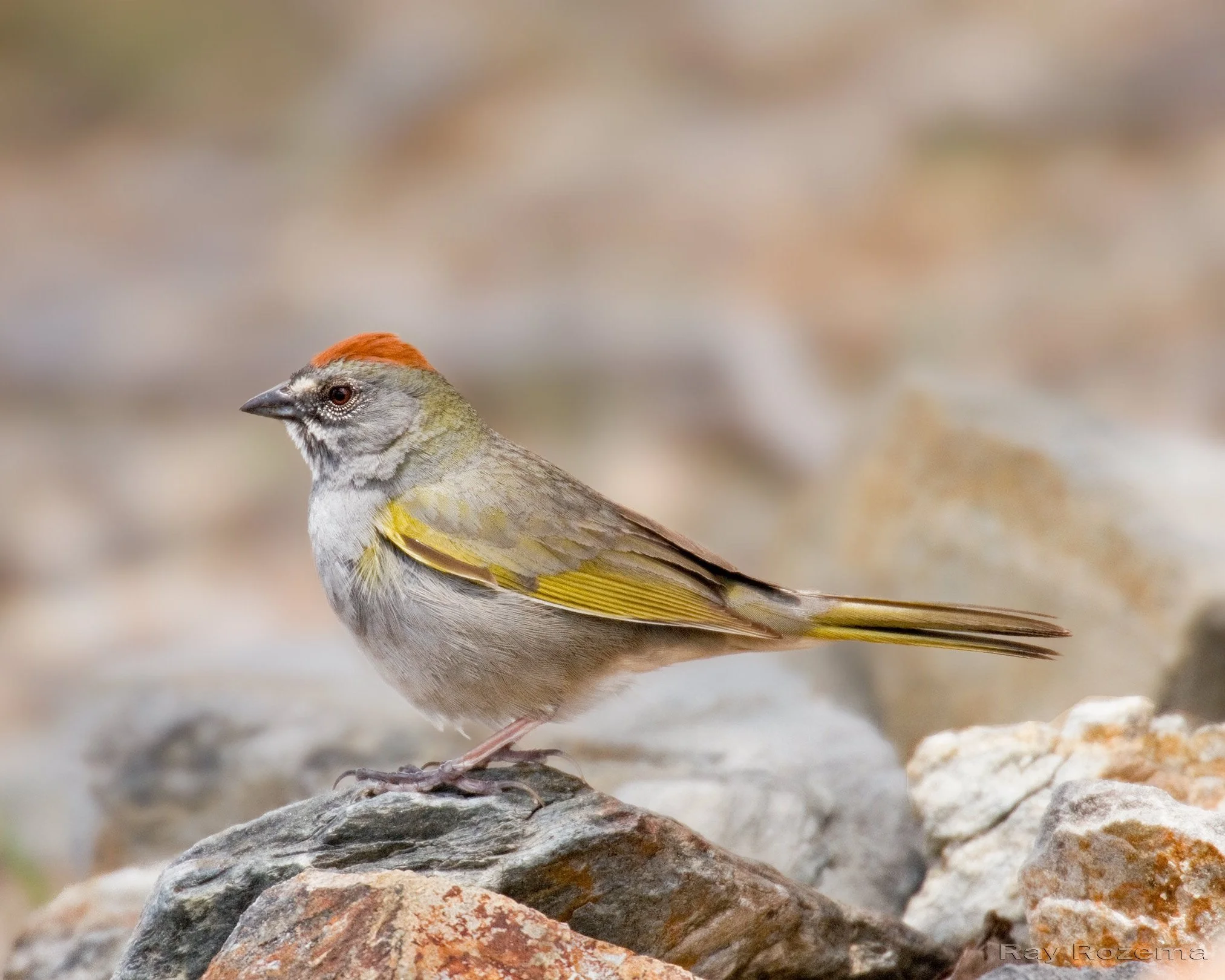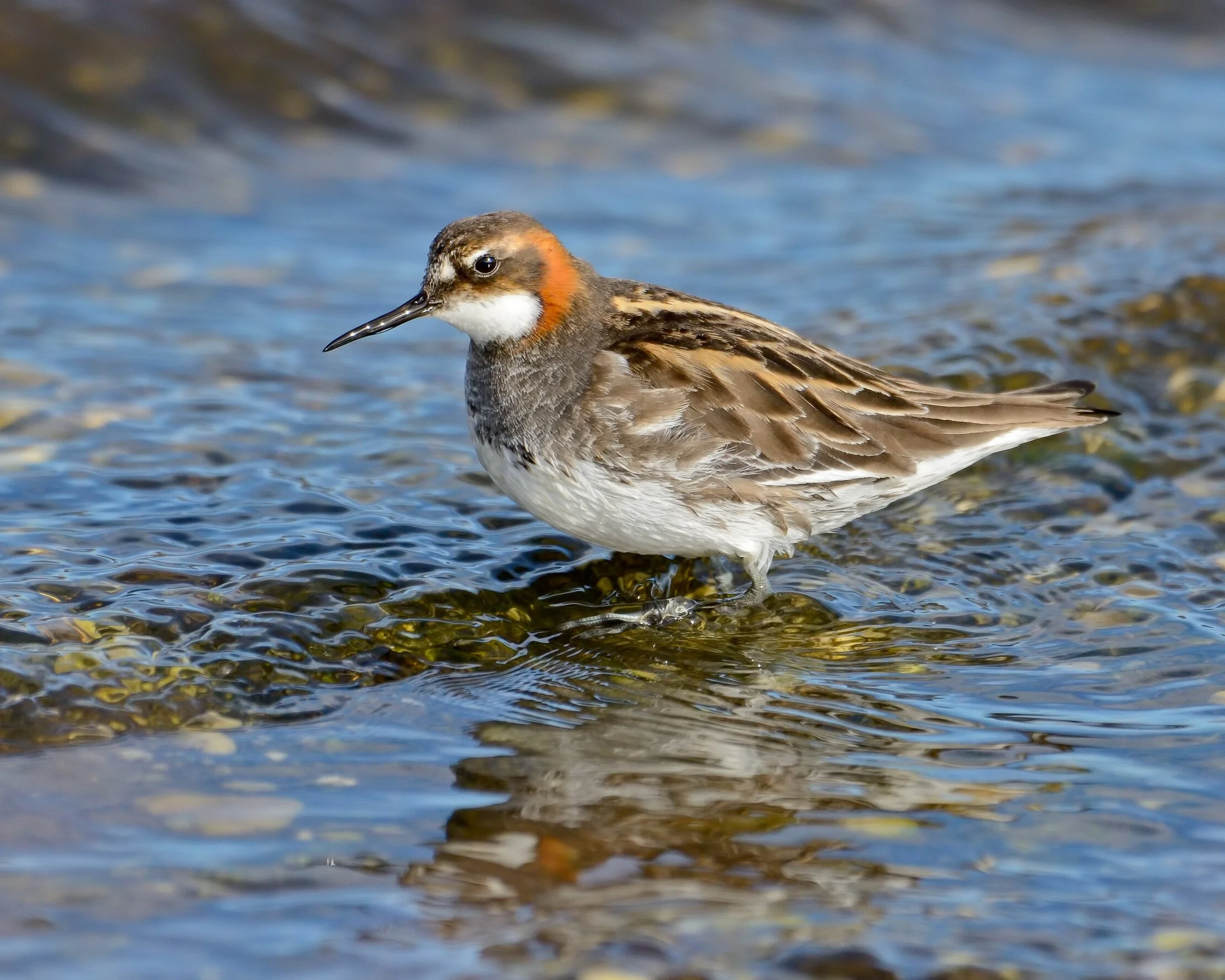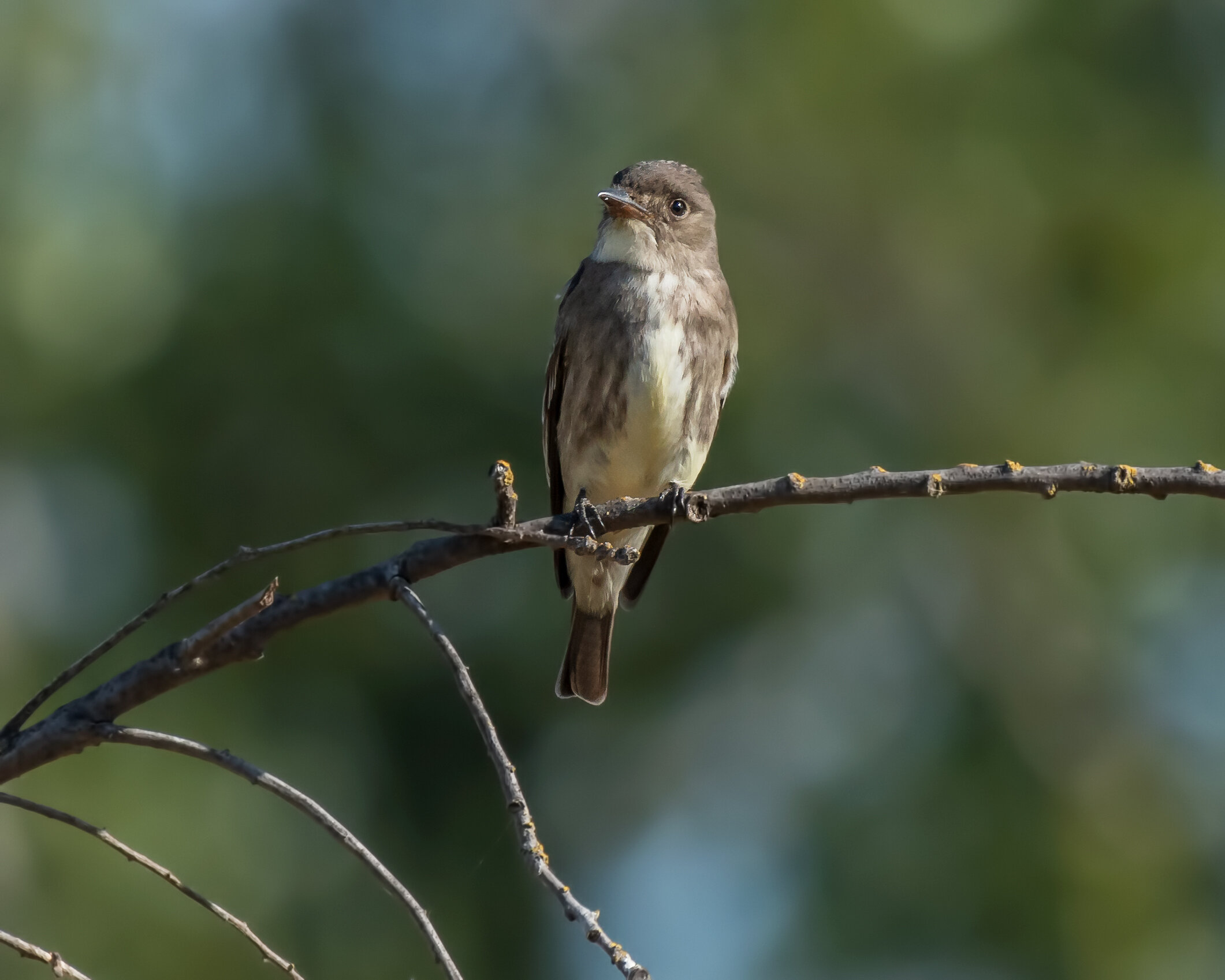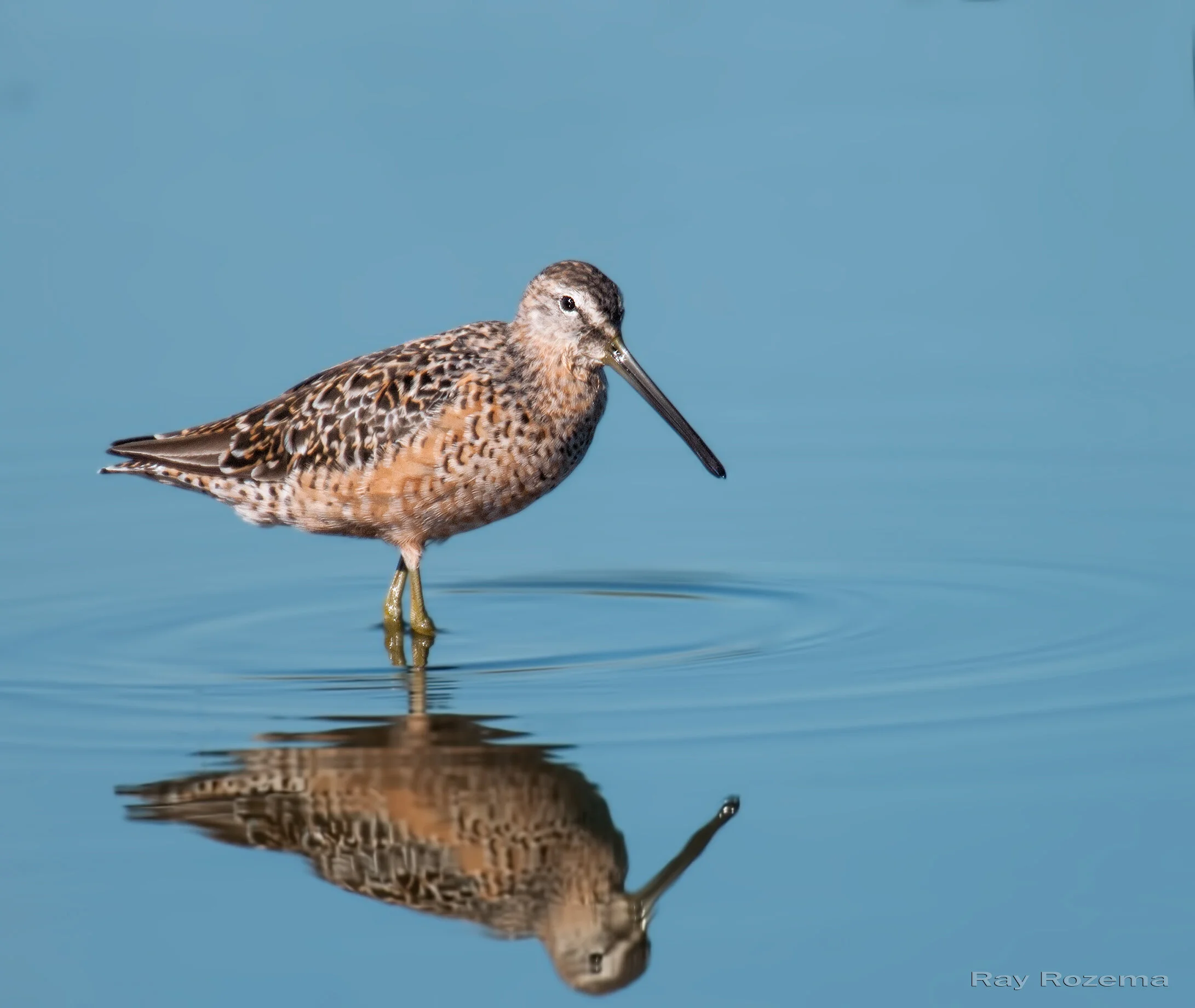SAS Field Trip: Hayward Regional Shoreline, 07/13/25
We watched a Whimbrel clean its prey in a puddle before eating. Image by Daniel Lee Brown
Leader Kevin Thomas reported: Mid July can be an extremely hot time in the Central Valley of CA so we ventured over to the Bay Area for a break from the warm weather. When the four of us arrived at Hayward Regional Shoreline the marine layer was in place and temperatures were in the low 60s, a nice way to start the morning. The sun started to break through about halfway through our walk and we finished in full sun at around 70 degrees. There were lots of signs of breeding in the area with numerous young Song Sparrows, House Finches, and Wild Turkey around. It was low tide in the bay and the exposed mudflats were covered in shorebirds, many too far away to identify but we did get great looks at Willet, Whimbrel, Marbled Godwit, Semipalmated Sandpiper, and Least Sandpiper. The Least Sandpiper were particularly close and dazzling in their alternate plumage. A highlight was watching a Whimbrel capture what appeared to be a small mollusk and carry it over to clean it off in a small puddle before gulping it down. Watching it delicately handle the prey in its bill and reposition to clean and consume it was very interesting. We were fortunate enough to hear a lone Ridgway's Rail although it never popped out of the vegetation to provide a look. The ponds on the east side of the area were covered in Black-necked Stilt and American Avocet; hundreds were out feeding, preening, and strutting around the shallow water. It was a wonderful morning in the Bay Area with good people and birds along with pleasant temperatures.
SAS Young Birders Club Field Trip: Woodland Water Treatment Plant, 07/13/25
Redhead—both adults and juveniles—were fascinating to watch diving and surfacing. Image by Daniel Lee Brown
Leader Mackenzie Hollender reported: Three young birders and two parents met my father and me at the Woodland Water Treatment Plant on this sunny morning. Right away, we noticed an abundance of Cliff and Tree Swallows flying across both ponds, and Great-tailed Grackles walked on the gravel road. Ruddy Ducks floated in groups and dove under water at the back ends of the ponds, along with female Northern Shovelers and Gadwall. At the start of the northern right pond, we watched an outstandingly large group of Snowy Egrets foraging with American White Pelicans. We scanned a sandbank with a flock of resting Canada Geese and were able to pick out one Greater White-fronted Goose among the flock. We enjoyed a dusty immature Yellow-headed Blackbird that perched in perfect view in the short grass behind the shore. We admired a beautiful adult Peregrine Falcon overlooking the pond from the top of a dead snag. We noted multiple Canvasback swimming in the water, and a plethora of American Coots as well. We watched a group of nine female and immature male Redhead dive under and resurface from under the water, noting their round heads and thin white ring around their eyes.
Black-necked Stilt flock, calling rapidly, flew by very closely, Image by Mary Forrestal
Pied-billed Grebes were also abundant, and we saw a chick trailing its parent, and noticed its intricate black, white and orange-red face patterning. From there we headed for a loop around the field adjacent to the ponds to look for burrowing owls, but we had no luck in this pursuit. We did get incredible looks at a Coyote resting on the gravel path. From the field path, looking out across the back of the north pond, we saw Western Grebes carrying fluffy silver chicks on their backs, got amazing looks at two adult male Redhead preening on the sandbank, watched a couple of fly-by Long-billed Dowitchers and Greater Yellowlegs, and observed Black-necked Stilts flying very close to us while calling rapidly. We enjoyed a flock of ten Least Sandpiper that briefly landed on the short shoreline below the field before taking off again. On the field path, we saw Western Kingbirds, heard a Marsh Wren and a Western Meadowlark singing, and saw a massive flock of Cliff Swallows perched vertically on the side of a building. Ever-present White-faced Ibis that flew overhead was a continuing highlight throughout the duration of the trip. Overall, we had a nice, well-rounded day with a lot of species diversity and enthusiasm.
SAS Field Trip: Wrights Lake Area, 07/19/25
A pair of Green-tailed Towhee were enjoyed. Image by Ray Rozema
Leader Rachael Cowan reported: Four of us met up for a gorgeous day of birding at Wrights Lake. We spent a long time looking for the Lazuli Bunting we heard at our first location at Lyons Creek Trailhead, but we never caught a sight. We did find many great pairs: Red-breasted Sapsucker, Hairy Woodpecker, Green-tailed Towhee, and Western Tanager. And we also had a great view of a MacGillivray’s Warbler. We hit Wrights Lake later than expected and enjoyed great sightings, but it was generally quiet due to high recreation. We caught lots of activity between fledglings and parents, most notably among Red-breasted Sapsuckers, and Northern Flickers. We saw Western Wood-Pewee, Olive-sided Flycatcher through the walk along the lake and enjoyed sightings of two different Bufflehead females with fuzzy young in tow, as well as some Common Mergansers with their young. Further into the wetlands we were treated to the song of the Hermit Thrush, and we also spotted a Chipping Sparrow. At our farthest point out, we saw a pair of Black-backed Woodpeckers. Once back at the lake, we saw an Osprey flying and hovering over the lake and perhaps a favorite observation as we approached the end was a pair of Pine Grosbeaks. We were not sure if they were a pair of juveniles chasing after a parent. We had a total of 15 species at Lyons Creek Trailhead and 28 species at Wrights Lake.
SAS Field Trip: A Focus on Shorebirds at the Bufferlands and Echo Water Facility, 07/20/25
Leader Chris Conard reported: CANCELLED
SAS Field Trip: Mississippi Bar on Lake Natoma, 07/24/25
No report submitted
SAS Mindful Field Trip: Sierra Discovery Trail, Emigrant Gap, 07/27/25
Hairy Woodpecker was seen as well as heard. Image by Larry Hickey
Leader Paul Miller reported: The weather was absolutely beautiful for a fun day of birding. A total of eight people attended the trip, including two teenagers from Seattle with their grandparents. The trail winds through a dense conifer forest with tall mature trees. Most of the birding is by ear (or Merlin) as many of the birds were hanging out way up in the trees. Species observed were: Red-breasted Nuthatch, Golden-crowned Kinglet, Steller’s Jay, Northern Flicker, Spotted Towhee, Hairy Woodpecker, Dark-eyed Junco, and Common Raven.
SAS Field Trip: Yolo Wildlife Area-Migration Hotspot, 08/02/25
We enjoyed watching the spinning feeding behavior of one Red-necked Phalarope (shown) and several Wilson’s Phalaropes. Image by Daniel Lee Brown
Leader Kevin Thomas reported: Our group of 9 arrived at the gate for Yolo Wildlife Area at 6:05 am for our early morning start to go looking for shorebirds in the recently flooded fields east of parking lot C. We were delayed for a bit as we waited for someone to show up and unlock the gate for entry. We managed to pick up a Swainson Hawk and several groups of flyover White-faced Ibis while we were waiting. After getting through the gate we headed to parking lot C where we were greeted by singing Marsh Wren and Song Sparrows. We started the trek along the fields east of parking lot C to the flooded fields a half mile or so out from the parking lot. We positioned ourselves to use the sun to our advantage looking back in good light at the thousands of shorebirds feeding in the flooded fields. We had lots of Long-billed Dowitcher and Least Sandpiper throughout the morning. Our unexpected bird was a lone Wilson's Snipe that flew by us at the very start of the walk and landed in a dry dirt field in the grass edge. We picked up some Western Sandpiper and Lesser Yellowlegs among the flocks of the more common species. As we circumnavigated the ponds, we encountered a few Wilson’s Phalarope and one Red-necked Phalarope exhibiting their spinning behavior while feeding. With four scopes and ample experienced birders, we were able to comb through the flocks and look for anything rare. Although nothing rare showed up we had a lot of time to discuss various aspects of shorebird identification and life history. It was a great morning to practice identification skills and share in the joy of shorebirding.
SAS Field Trip: Cosumnes River Preserve, 08/07/25
It took some discussion to concur that our Contopus flycatcher was an Olive-sided Flycatcher. Image by Daniel Lee Brown
Leader Rich Howard reported: Five people from as far away as Lake Tahoe and Turlock braved the potential heat and road closures to explore the River Walk at Cosumnes River Preserve. Before the walk started, some folks in the parking lot spotted an American Barn Owl flyover and a Downy Woodpecker working the trees across the road. Spotted Towhees were a constant presence, giving both their mewing call and trilling song. Nuttall’s Woodpeckers and White-breasted Nuthatches were also widespread. Our first peek into Middle Slough yielded a nearby adult Black-crowned Night Heron. The riparian vegetation between the path and slough hosted a Western Flycatcher, and a Contopus flycatcher high in the dead branches of a cottonwood. After a long discussion and many scope views front and back, we settled on Olive-sided Flycatcher (see eBird list for details). Young birds were a fun challenge, and we had a very scruffy Song Sparrow, Oak Titmice with no crest, and odd vocalizations from several birds. Three wren species were fun to sort out: Bewick’s, Northern House, and Marsh. With only a gentle breeze, it took the Turkey Vultures a while to get airborne, and the Swainson’s and Red-shouldered Hawks were distant specks until we got back to the parking lot for a closer sighting. Every trip needs a mystery bird, and for us it was a high and distant column of swallows that we only spotted when looking at the hawks. We eliminated Barn Swallow based on tail shape, but that’s as close as we could get. The lack of water in the ponds meant flyover flocks of Canada Geese were our only waterfowl; the stunning flocks of geese and ducks are still a few weeks away. The cool Delta breeze and plenty of shade permitted us to walk all around the once and future ponds, and we were back at the Visitor Center before 11 to see Anna’s and Black-chinned Hummingbirds feeding in the native flowering shrubs.
A checklist for the walk can be found here: https://ebird.org/checklist/S265671290
SAS Field Trip: Napa and Sonoma County Marshes, 08/09/25
A surprise find was a male Tri-colored Blackbird (shown) spotted among many Red-winged Blackbird. Image by Daniel Lee Brown
Leader Dan Williams reported: Twelve of us had a phenomenal day birding the Napa-Sonoma Marshes. We started at Wetlands Edge Park in American Canyon where we were greeted right away by a pair of White-tailed Kites hover-foraging over the shrubby fields adjacent to the tidal flats. At one point, one of them caught a small mammal and transferred it to the other. The tide was receding all morning and the mudflats were teeming with shorebirds: Willets, Godwits, Curlews, both Dowitchers, Black-bellied and Semipalmated Plovers, and Least and Western Sandpipers, all in the many dozens to hundreds. While passing the freshwater lagoon on our way to the Napa River Mouth, the first of our surprise rarities, a BLACK TERN, flew by low over the lagoon giving us brief but definitive views. A Virginia Rail spoke up from the reeds and then gave us a brief peek as it ventured out then dashed back to cover. As we scanned through the throng of Red-winged Blackbirds, we came upon a male TRICOLORED BLACKBIRD with its darker red wing patch and milky white border; another rarity for this park. Other highlights there included an Osprey, Black-crowned Night Herons, Green Herons, and Snowy Egrets, some chattering Chestnut-backed Chickadees, and an early Glaucous-winged Gull.
A single Semipalmated Sandpiper (shown) was seen among hundreds of Western and Least Sandpipers. Image by Steve Scott
After a lovely picnic lunch, we ventured up HWY 29 through the winery traffic to the Huichica Unit of Napa-Sonoma Marshes. There, the tidal mudflats continued to be good to us, with hundreds more Least and Western Sandpipers and a single SEMIPALMATED SANDPIPER, dozens more Semipalmated Plovers, Greater and Lesser Yellowlegs, and a squadron of American White Pelicans. As we made our way down the trail, we heard a peculiar squawking that turned out to be a fledgling Great Horned Owl in a eucalyptus tree loudly begging to its nearby parents. The pond at the southern end of the trail held dozens of Wilson's and Red-necked Phalaropes, and one Caspian and one Forster's Tern patrolled up and down the adjacent canal. While looking through the darting Barn and Cliff Swallows low overhead, a BANK SWALLOW suddenly appeared, capping off a day that was full of wonderful variety, multitudes of shorebirds, and more than a few surprises along the way.
We enjoyed watching Long-billed Dowitcher in flight during our trip that occurred on Migratory Shorebird Day. Image by Ray Rozema
SAS Young Birders Club Field Trip: Migratory Shorebird Day, 08/09/25
Leader Mackenzie Hollender reported: Six young birders and three parents met my father and me at the Yolo Bypass Parking Lot C for a morning of shorebirding. In the parking lot, many flyover White-faced Ibis and Red-winged Blackbirds and a singing Song Sparrow welcomed us to the preserve. We drove over to the August shorebird fields and noted Great Blue Herons, and Double-crested Cormorants on the way. Immediately after getting out of the car, we noticed giant flocks of ducks skimming the distant flooded fields, and we were able to pick out Mallard and Green-winged Teal. An adorable River Otter swam in the canal, peeking its head up from the water to look at us. Our first shorebird of the day, Greater Yellowlegs, sat perched in the far end of the first field. We later saw many flying over and noted their brilliant golden legs, white tail feathers and breeding plumage barring on the sides. Long-billed Dowitchers also flew overhead; we noted the white wedge up their backs. We caught a few quick glances at a flyover flock of Semipalmated Plovers, noting their black-tipped orange bill and dark bands around the eyes, forehead, and breast. Throughout the trip, we received many extraordinary views of Least and Western Sandpipers foraging in big groups just beyond the road, both lifers for some of the attendees. We noted the differences between the two, the Western’s greater size, greater amount of white on the underparts and breast, and the Least’s pale legs, darker back and “snipe stripes”. Far out at the back of a field, we scoped a distant Red-necked Phalarope, noting its stunning white plumage in comparison to other small shorebirds. A departing flock of Greater Yellowlegs revealed a smaller lookalike with a shorter bill, which some of us heard giving a one noted call as opposed to the 3-4 notes of a Greater Yellowlegs- a very strong candidate for the less common Lesser Yellowlegs. Suddenly we heard a strange, one noted call that sounded like a yellowlegs with a lower pitch, coming from a flying bird. As the bird flew in a wide circle around the fields, it revealed its black axillaries, and pale face with a dark smudge around the back of the eye-- a Black-bellied Plover, a lifer for many. A drifting Northern Harrier, sharp-winged Peregrine Falcon, shrieking Caspian Terns, and circling American White Pelicans added to the scene. Brown-headed Cowbirds in a willow tree bid us farewell from the preserve.
SAS Field Trip: William Pond Park, 08/10/25
Lazuli Bunting was one of the 44 species we observed. Image by Mary Forrestal
Leader Mark Martucci reported: Fifteen people braved the heat and detected 44 species of birds along the American River Parkway. Highlights included White-throated Swift, Belted Kingfisher, Yellow-billed Magpie, Western Tanager, Black-headed Grosbeak, and Lazuli Bunting.











